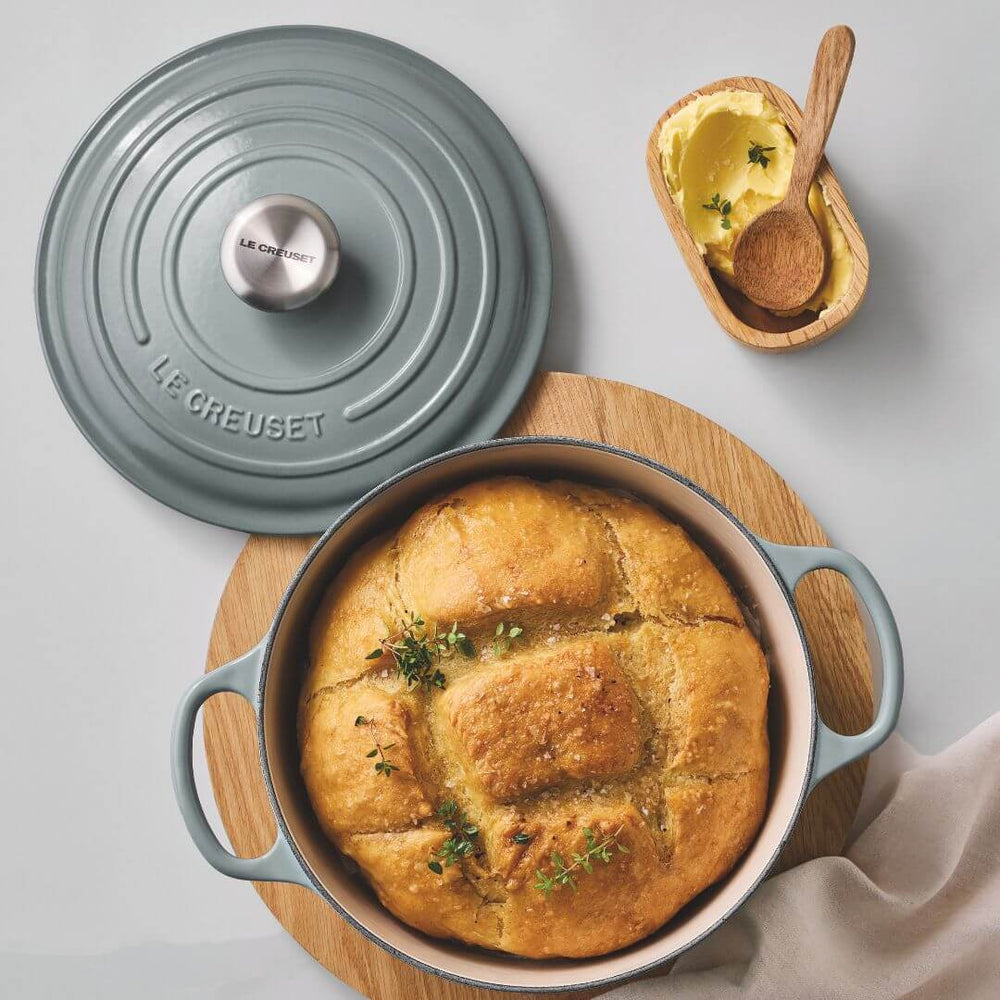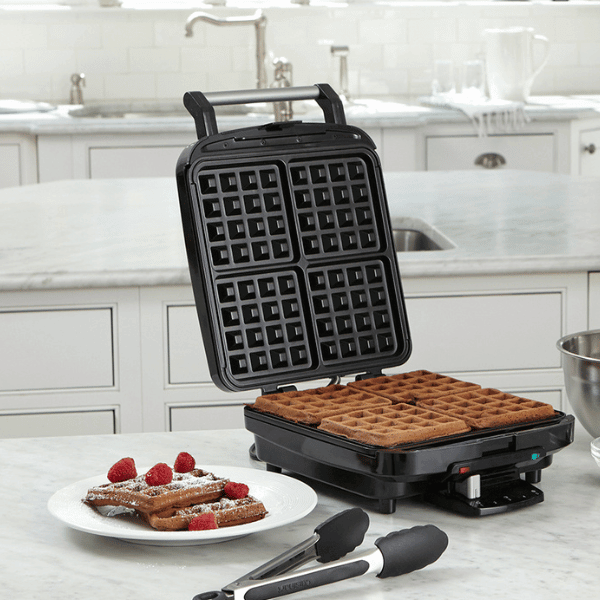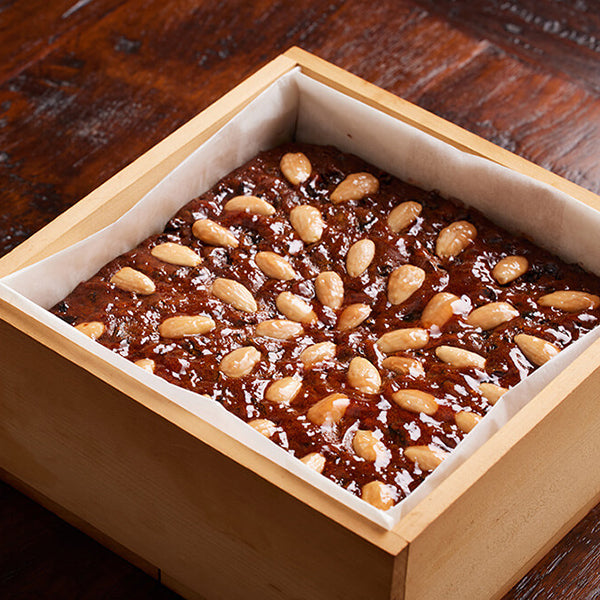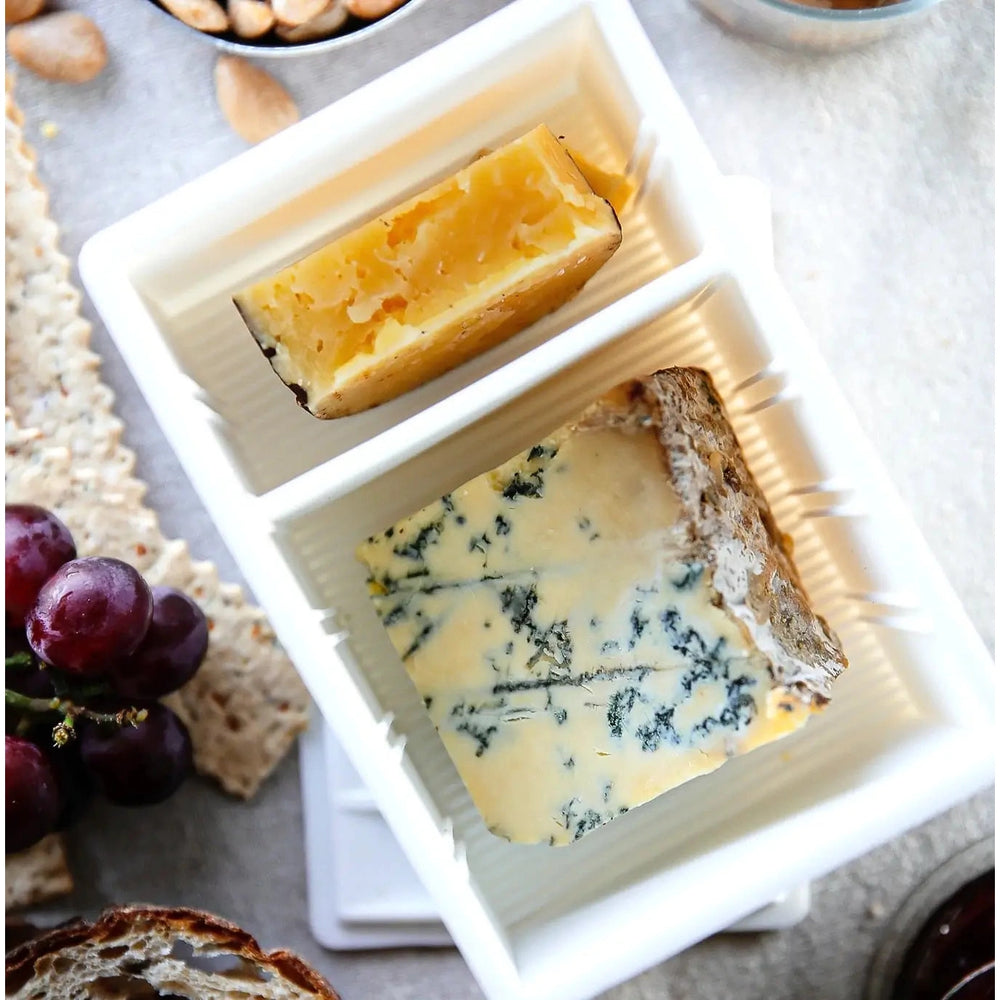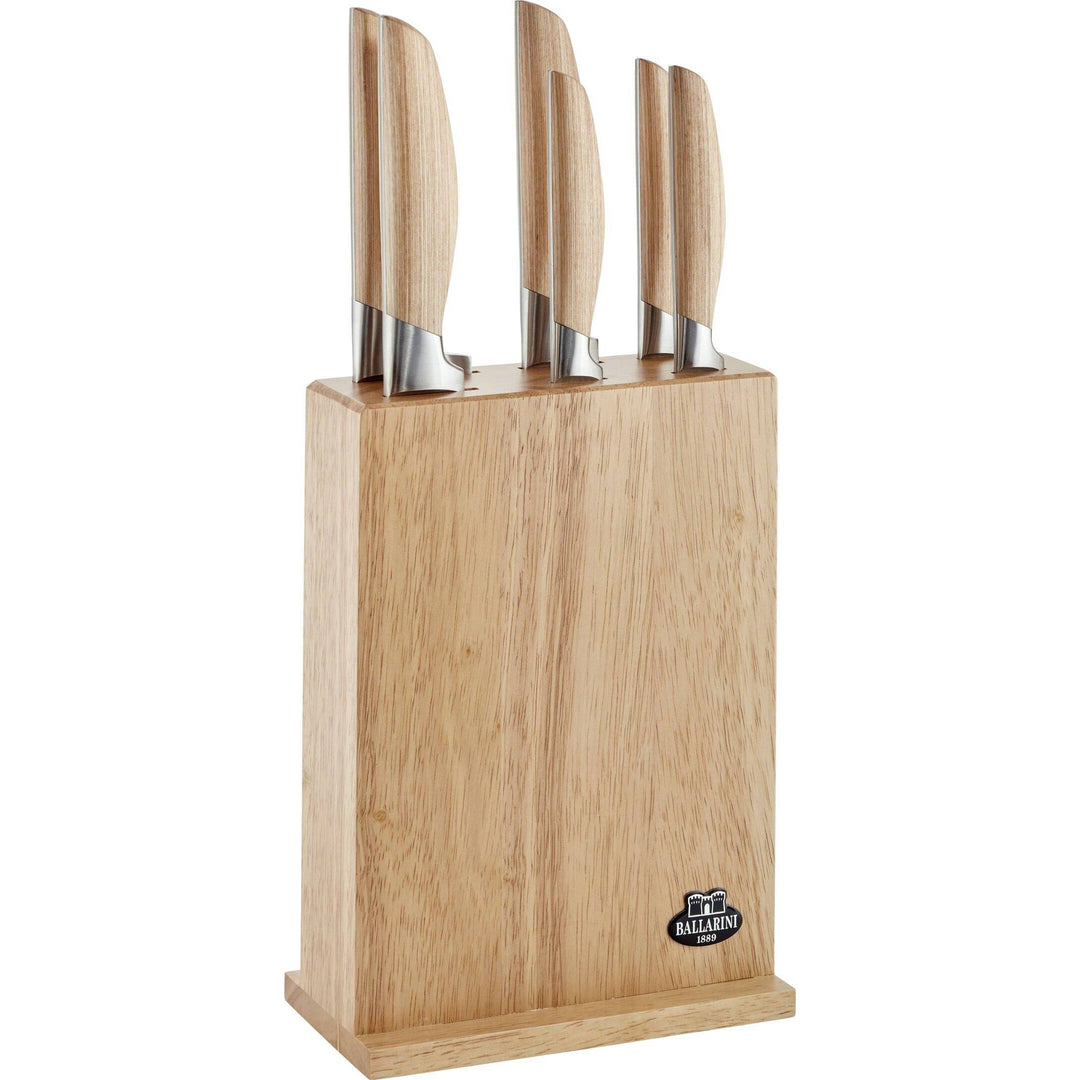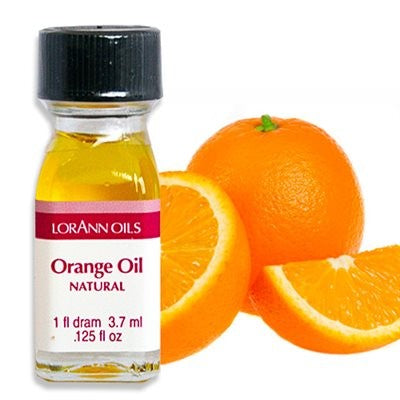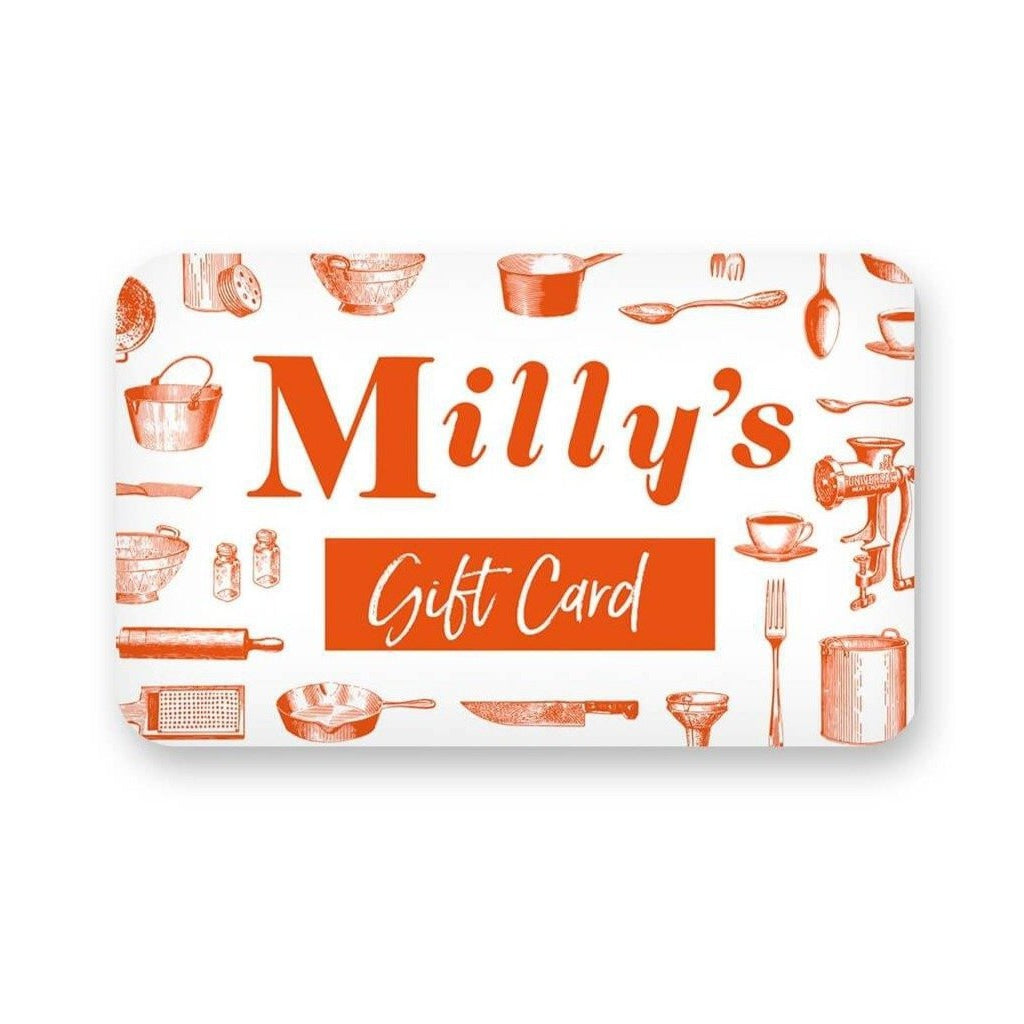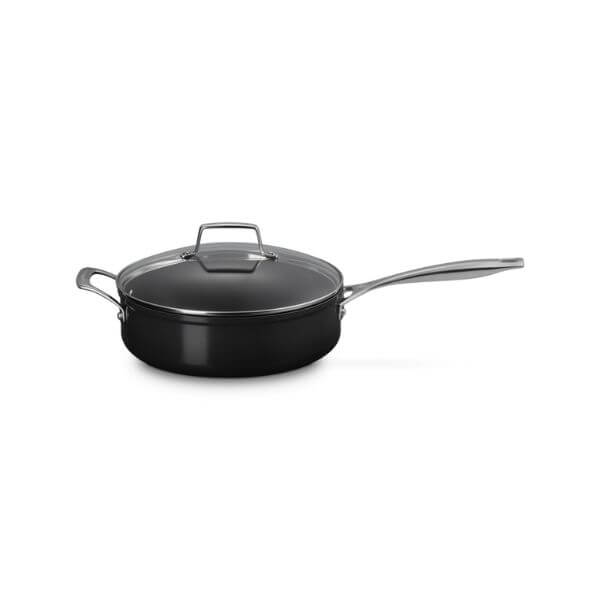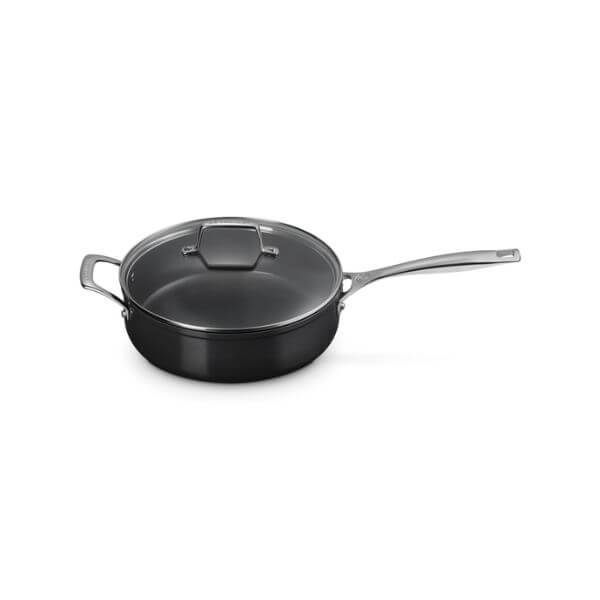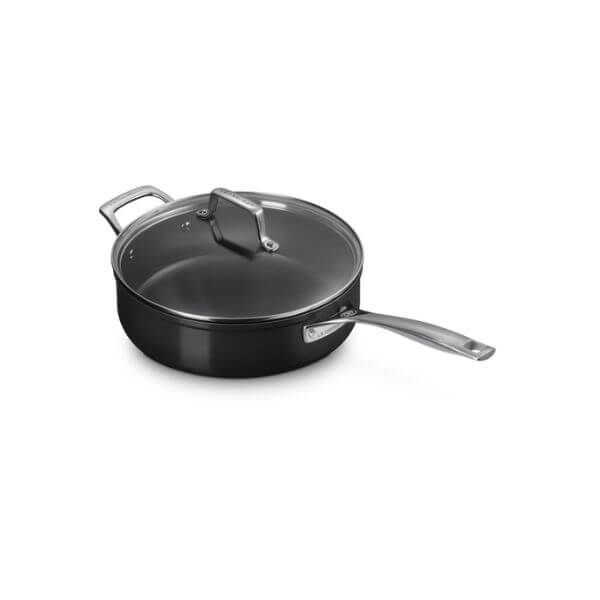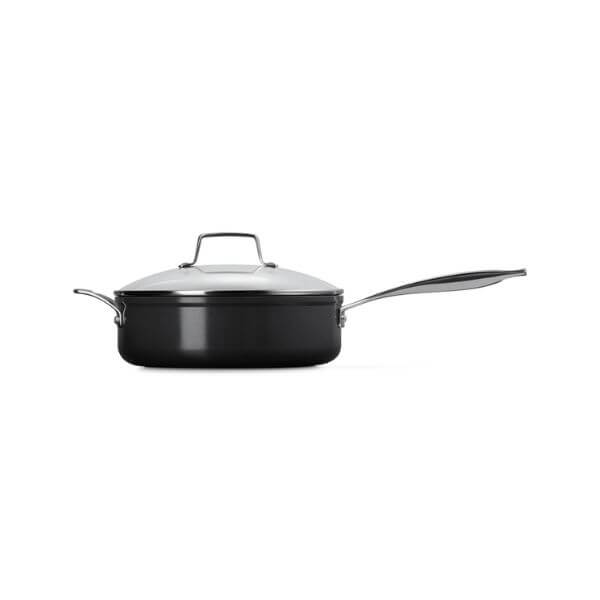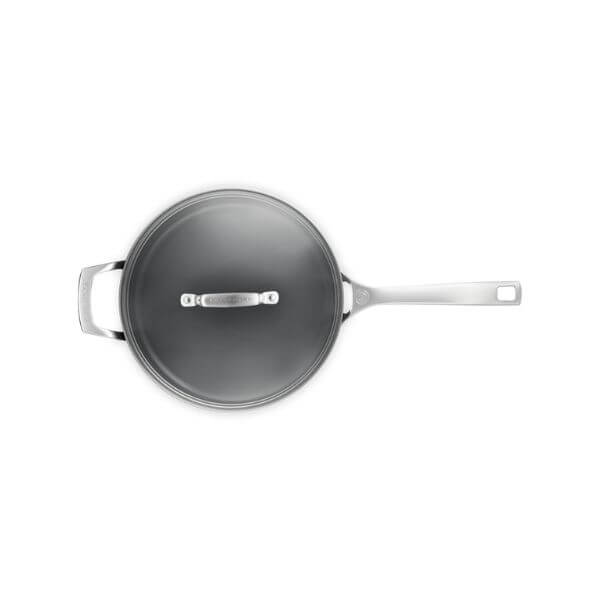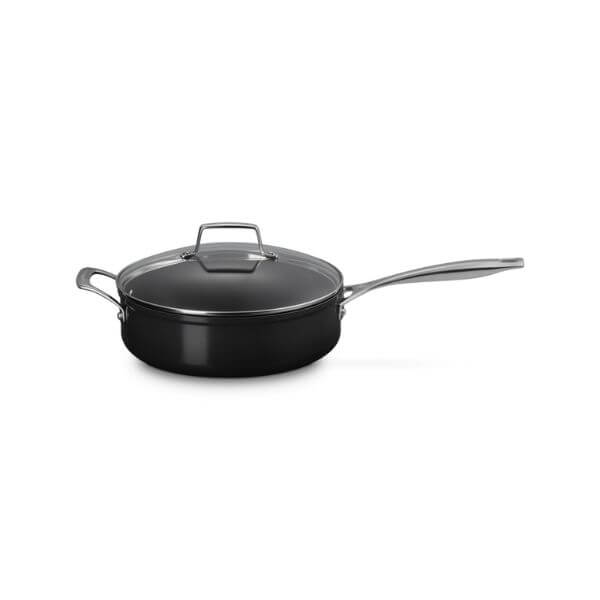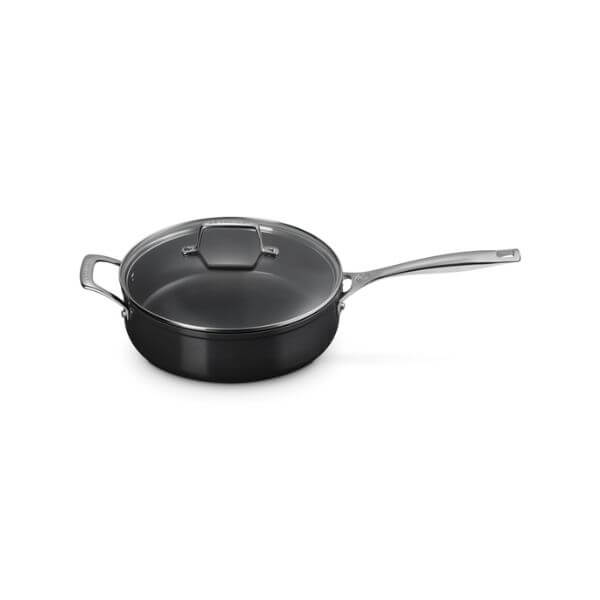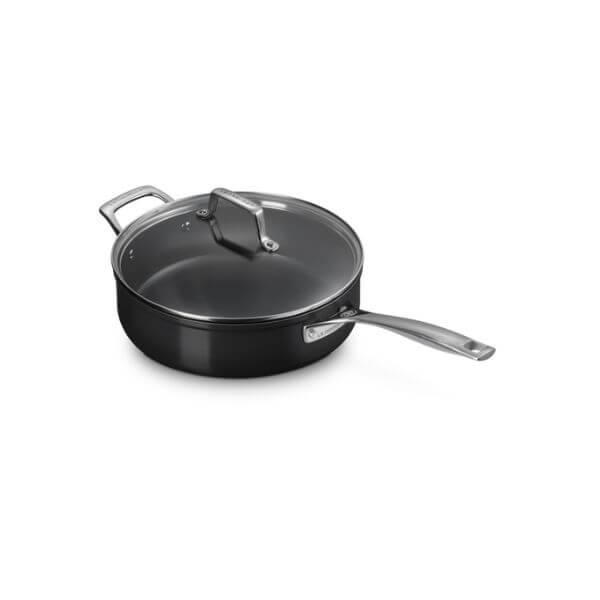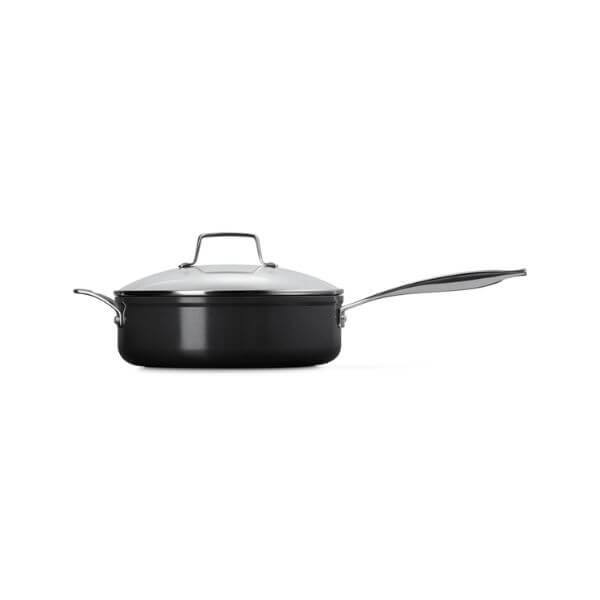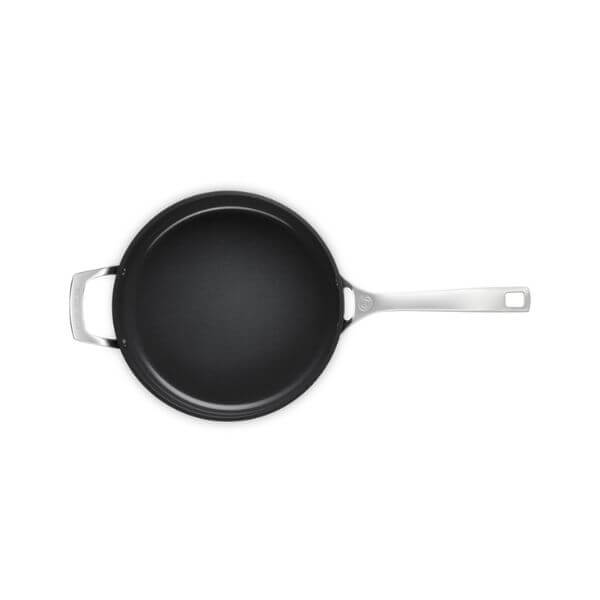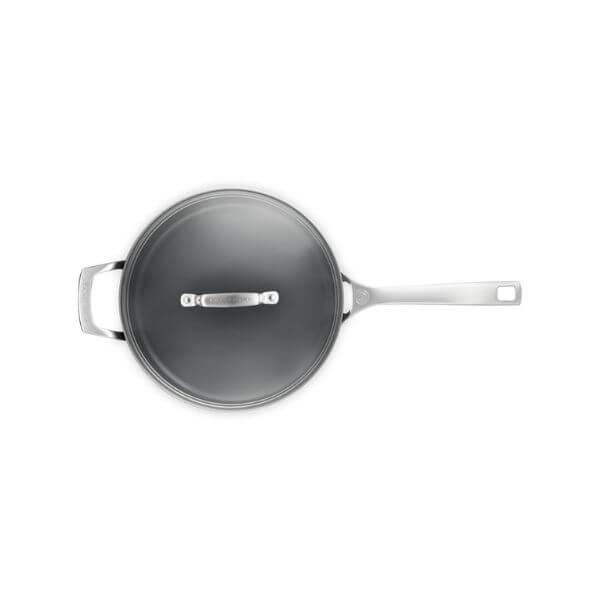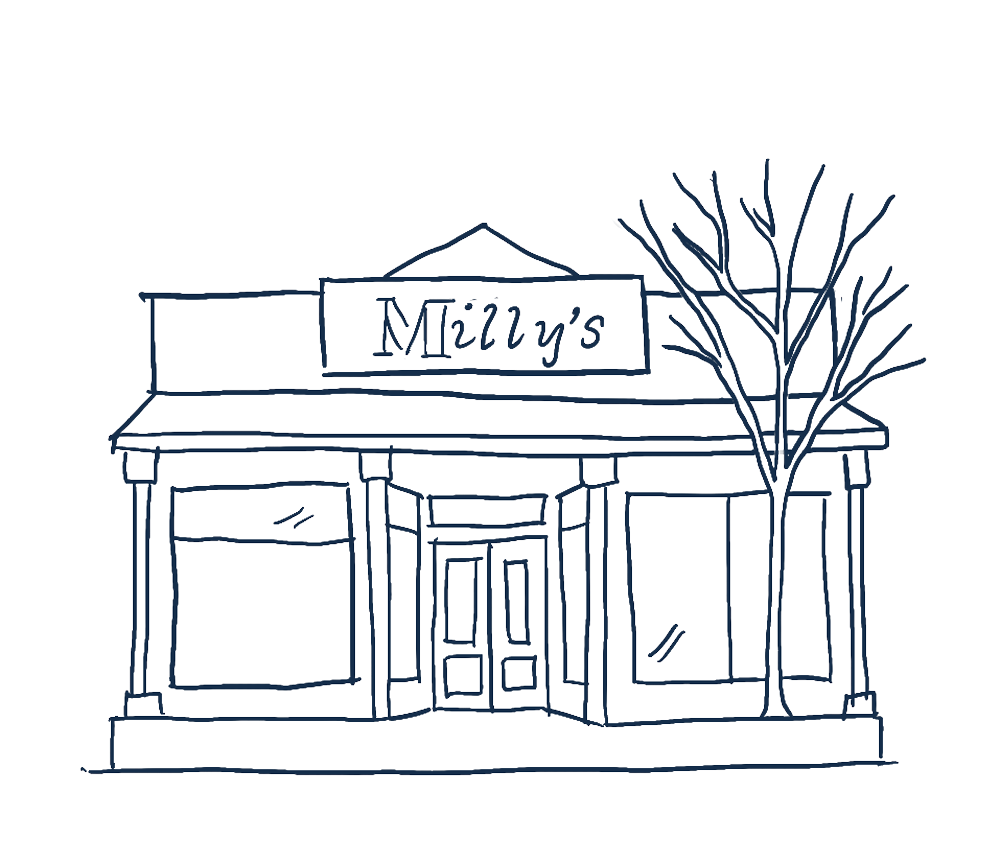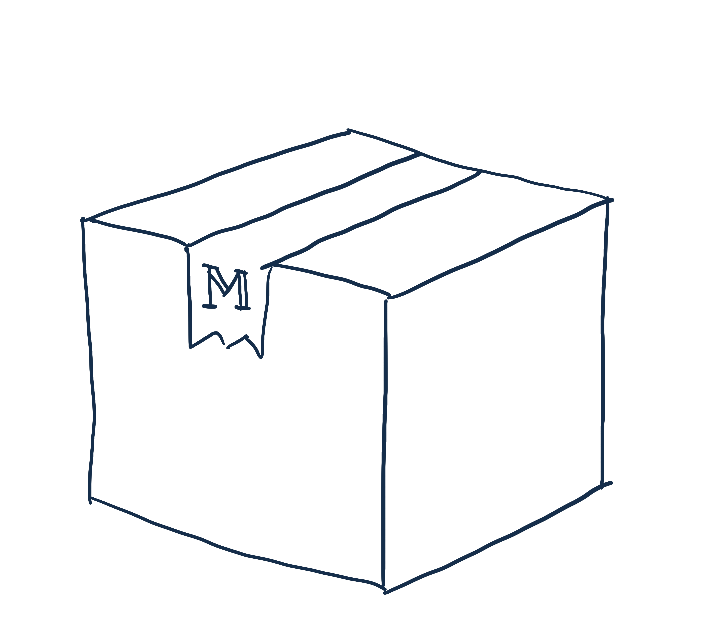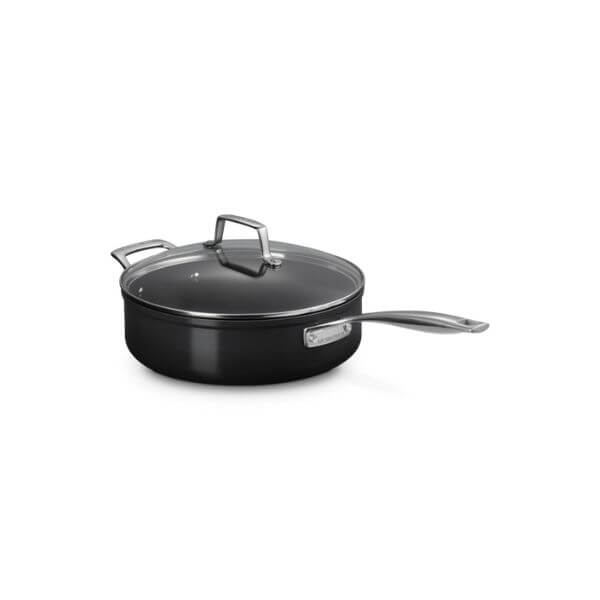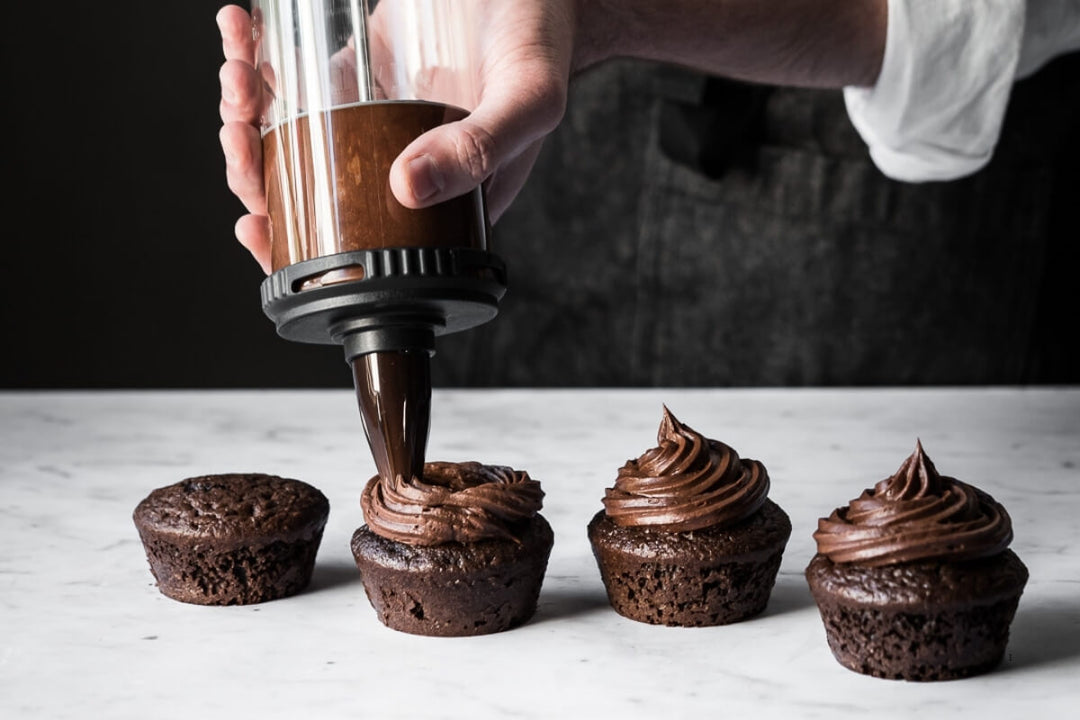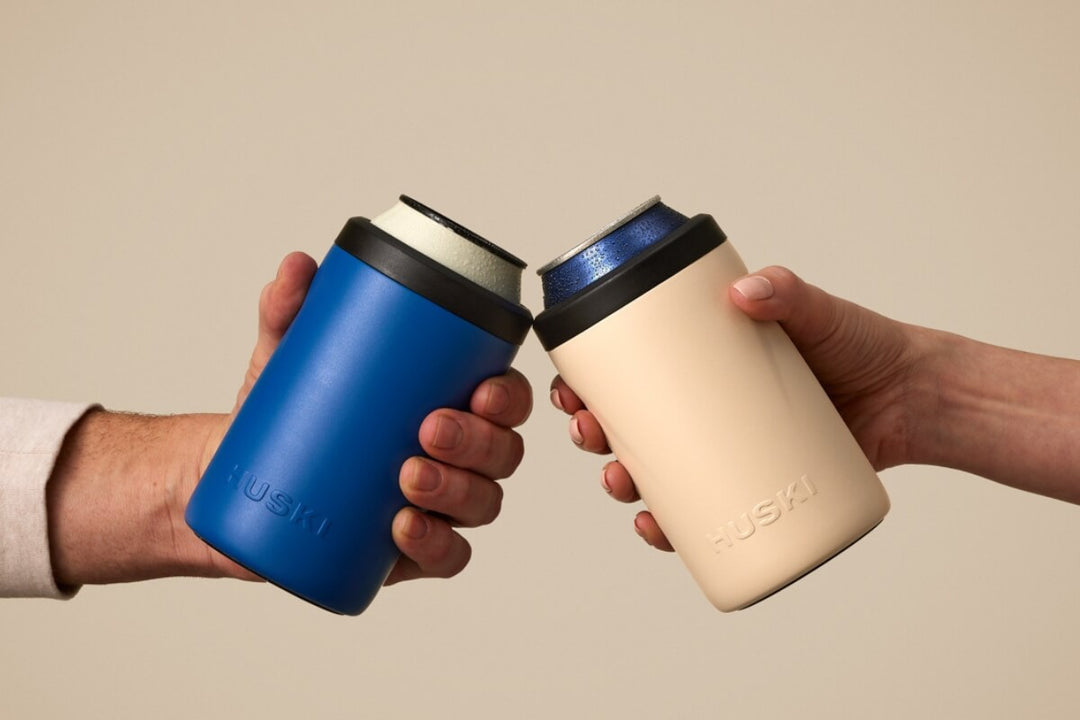Le Creuset Ceramic Non-Stick Saute Pan 26cm
Please note this product is available as an Order only item.
We don't carry this in store but can order stock on your behalf,
which we would expect in 7 - 14days. Please click here for our
returns, shipping and terms & conditions for Order only items.
- Free Freight $150
- Free Click & Collect from our Ponsonby Store
- Same Day Auckland $45
- Secure payments
The Essential Ceramic Non-Stick Sauté Pan's added depth and wide cooking surface make it perfect for pan-frying and sautéing. Simply add the tempered glass lid to simmer and braise.
Providing easy food release and quick clean-up, Le Creuset's advanced Non-Stick Ceramic is made without PFAS and is the choice for superior performance and effortless cooking.
Features
- Best in class: Le Creuset products are crafted from the finest materials in facilities around the world, ensuring the quality you expect from Le Creuset.
- Ceramic coating made without PFAS: Applied all over and provides superior non-stick properties promoting easy food release and cleaning.
- Forged heavy-gauge aluminium body: Assists in evenly distributing heat without creating hot spots while retaining heat efficiently.
- Oven safe up to 280°C (220°C with heat-resistant Le Creuset glass lid): Being oven-safe and compatible with all hob tops promotes versatility, allowing you to master more recipes.
- Fully encased stainless steel disc: Enables induction compatibility.
- Stain resistant: Excellent stain resistance means that our Essential Non-Stick Ceramic maintains its appearance.
- Reinforced rim: Prevents cookware from warping.
Before first use: Remove all packaging and labels, wash pans in hot soapy water, rinse and dry thoroughly. Condition the interior non-stick cooking surface. Rub a film of vegetable or corn oil over the entire surface using a pad of kitchen paper towels. Rinse the pan with hot water, dry thoroughly. The pan is now ready for use.
DO NOT condition the black exterior sidewall.
Usage recommendations: Le Creuset Essential Non-Stick Ceramic pans are completely multifunctional for use on any hob, under any domestic grill, or in any domestic conventional or fan-assisted oven (not suitable for use in microwave ovens).
Always match the pan base size to the hob heat zone it is to be used on. Gas flames must always be confined to the base area and NEVER extend up and around the sidewalls of the pan. On any glass topped hob always lift the pan on and off, or across the surface. Never slide the pan as this may cause damage to the pan base as well as to the glass.
Use MEDIUM and LOW heat settings for the majority of cooking on all heat sources, allowing the pan to heat gradually and evenly. For those times when searing of meat, poultry or fish is required a medium to higher heat can be used initially, but once the pan is hot and the food added, the heat should be lowered.
The pan should NEVER be used on a maximum or high heat setting either for pre-heating or cooking as the excessive surface temperatures will damage the non-stick cooking surface.
Induction Hob Cooking: Always match the diameter of the stainless steel disc in the base of pan to the induction hob cooking zone. Using a pan with a small stainless steel disc on too large a cooking zone may result in a weaker magnetic field being created and reduced heat output. In some cases the hob may not “recognise” the pan and no heat will be generated.
DO NOT use the boost function for longer than is required to bring the pan’s contents to a boil. The boost function should only be used for rapid heating of large quantities of water e.g. for boiling pasta or vegetables.
During cooking, you may notice some slight noise being generated in the pan by the induction hob. This will not damage the pan or affect cooking performance.
Oils and fats: Add a little oil or fat to the cooking surface before heating begins. This will improve the flavour and browning of foods. At no time should the oil or fat be allowed to become smoking hot. If this should occur cool the pan before proceeding.
See our smoking point info for more advice on suitable oils when cooking: What is a Smoke Point?
Fat-free Cooking: When cooking with no added fat or oil, pre-heat the pan on a medium setting for approximately 2 minutes before adding the food.
DO NOT leave the pan unattended during this time or allow the dry non-stick surface to overheat as permanent damage may occur.
Food storage and marinating: Do not store raw, marinating or cooked foods in the pans. Ingredients may cause damage to the surface.
Tools to use: You can use wooden or heat-resistant plastic tools. Do not knock tools on the top rim of the pan. Knives, or utensils with sharp edges, should never be used to cut foods on the non-stick surface. Hand held electric or battery operated beaters or blenders should not be used on the non-stick surface.
Oven Use: Suitable for use in all types of conventional oven (not suitable for microwave ovens). Oven safe to 260°C/500°F (220°C/425°F/Gas Mark 7 if the pan is used with a Le Creuset Toughened Non-Stick heat-resistant glass lid).
Grill Use: When used under a hot grill there should be a minimum distance of 5cm (2 inches) between the heat source and the top rim of the pan.
Overheating: Damage from overheating is instantly recognisable. The non-stick surface becomes discoloured and in severe cases detaches from the pan in the form of blistering or peeling.
Scratching: Score marks or severe scratching by heavy use of metal utensils is not covered by the warranty. Such damage is permanent and will result in the reduction of the non-stick release performance.
To prevent damage to the exterior, interior and rim use suitable cookware protectors in between products when stacking for storage.
Cleaning and Storage: Cool the pan for a few minutes before cleaning. Do not plunge into, or fill with, cold water when hot.
ONLY recommended non-stick cleaning pads should be used on the non-stick surfaces. DO NOT use any metal, harsh abrasive or very stiff pads/washing up brushes, or abrasive cleaning agents on ANY of the surfaces.
The essential non-stick ceramic coating offers excellent food release and is therefore very easy to clean. To maintain the appearance and performance of the non-stick coating, we recommend washing by hand in hot soapy water rather than cleaning in the dishwasher. This will prolong the life of the non-stick surface and enhance cooking performance.
If the non-stick pan is cleaned in the dishwasher only use domestic strength dishwashing detergent (we recommend non-lemon varieties). The cooking surface should be re-conditioned with vegetable or corn oil before each subsequent use.
Please note, prolonged, regular dishwashing may eventually mark or discolour any item of cookware and affect the release properties of non-stick surfaces. This is regarded as normal wear and tear and is not covered by the Lifetime Warranty. If the pan is regularly washed in the dishwasher some darkening of the outer ring of the base may occur or a powdery white deposit may form. This is normal and will not affect the performance of the pan. The surface dulling or white deposits can be removed by carefully cleaning the affected areas with a gentle nylon pad and a little water and washing up detergent. Afterwards rinse and dry thoroughly.
Handles: Handles are secured to each pan with stainless steel rivets. Always use a dry oven glove or cloth when handling hot pans during and after cooking.
Milly's Kitchen is committed to deliver your order as quickly as possible or to deliver your order at the most appropriate time according to your special delivery instructions.
If you can add the product to your cart without pre-order or order only info showing then we have the item/s in-store and they're available for immediate dispatch, please see our shipping page for approximate delivery times.
At Milly's Online, your satisfaction is guaranteed. If for any reason you are not happy, we will gladly replace, exchange (subject to availability) or refund within 7 days of purchasing any goods returned un-used with the applicable packaging as supplied (excluding order-only items).
Please note if you can add the product to your cart without a pre-order message popping up, then we have stock available for immediate dispatch.
Where there's a "Pre-order" or "Order only" product message, these items are out of stock in-store and not available for immediate supply, the restock estimation times will be noted with the listing.
If you place an order for out-of-stock items, any stock we have in transit will be allocated to fill your order as soon as the delivery arrives or we will include stock when we next order from that supplier.
Pre-Order Items
These are products we generally carry in-store and will often have ordered with the supplier, as soon as the stock arrives we will ship with our standard shipping estimate times or let you know the product is ready for your collection (for Click & Collect orders).
Order Only Items
Many of the brands we carry have a large selection of colours and specialty products that we don't necessarily carry in-store, however we're happy to order these specifically for your purchase.
Please select carefully as, because these are not pieces we carry in-store, these items can not be returned for exchange or refund due to a change of mind.
Occasionally we're advised of delays or out-of-stock issues from our suppliers, we will contact you as soon as we're made aware of these and you can decide how you'd like to proceed from there.
Free Freight for purchases over $150.00*
No Charge Click & Collect from our Ponsonby store.
Courier Freight Charges:
- Auckland (Orewa to Pokeno) $7.50
- Rural Auckland (including Waiheke Island) $14
- Nationwide $10.00
- Rural Charge of an extra $4.00 applies to rural delivery
*In-store only gift cards are excluded from our free freight offer, if you'd prefer not to pay for freight please consider purchasing the online version.
See our Shipping Info for all the Shipping Terms & Conditions.



